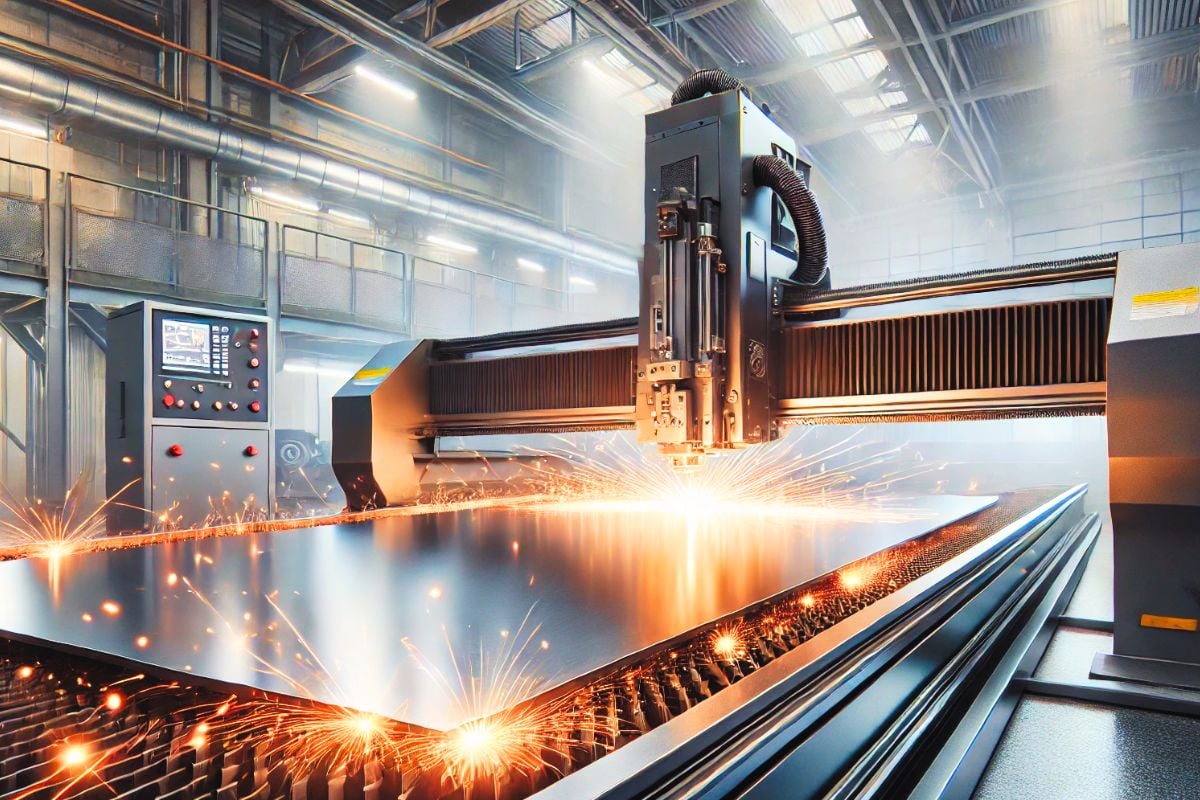A symbolic purchase that redraws the map
When a buyer in the United States acquires a Chinese-built 60 kW fiber laser, it signals more than a procurement—it marks a shift in industrial confidence and technological leadership. What once felt like a one-way flow of advanced tools from West to East now looks decisively bidirectional.
Why this machine matters
Built by Penta Laser in Zhejiang, this 60 kW system cuts 20 mm carbon steel at an astonishing 11–12 meters per minute. Earlier 20 kW platforms plateaued around 3.5 m/min, making this leap a true step-change in throughput and capability.
It is the first of its kind to reach the American market, and it arrives not as a curiosity but as a production-ready workhorse for demanding sectors like heavy manufacturing and construction fabrication. In high-mix, tight-tolerance environments, speed without precision is a liability, and this machine delivers both in tandem.
Specs that change the factory floor
Beyond raw speed, the laser brings a 3 x 13 m work area and 0.03 mm precision, which together allow larger parts and tighter tolerances in a single, continuous flow. Automated loading and unloading shrink turnaround, while angled cuts (bevels) unlock complex geometries in multi-process lines.
Key capabilities include:
- A massive, stable bed for large-format plates
- Automated material handling to reduce labor and downtime
- High-accuracy bevel cutting for welded-joint prep
- Consistent edge quality that trims post-process finishing
- Software-driven control for repeatable, data-rich operations
These specifications matter because they compress the time from digital design to finished part, where minutes add up to weeks across whole programs and supply chains. In competitive bids, the difference between 3.5 m/min and 12 m/min can decide the contract, not just the cycle.
A global market realignment
Penta Laser’s order book is swelling in the United Kingdom, Japan, and the Netherlands, a sign that performance—paired with price—can move entrenched markets. The center of gravity in fiber lasers has tilted toward Asia, and China’s suppliers now set more of the pace and fewer of the follow-ups.
Western names still carry immense weight—from Germany’s Trumpf to Switzerland’s Bystronic, Japan’s Mazak, and stalwarts like AMADA and Trotec. But when American factories import Chinese flagships, it validates the technology on the buyer’s home turf and reframes who is leading the frontier.
Performance versus power: the 60 kW threshold
Engineers often chase bigger wattage, but physics and economics do not scale linearly. As power climbs, efficiency gains can flatten, while energy and maintenance costs surge—a classic case of diminishing returns in industrial systems.
“As we push beyond 60 kW, efficiency gains become marginal while cost and energy use rise sharply,” said Penta Laser’s Wu Rangda, highlighting the balance between peak performance and practical deployment. That stance resonates in facilities where power pricing, grid capacity, and uptime targets shape equipment choices.
Practical advantages on the shop floor
At 60 kW, operators can nest thicker plates and still hit aggressive deadlines without flooding the floor with multiple, lower-power cells. One machine doing the work of several can shrink plant footprints, reduce fixtures, and simplify material flow.
The bevel capability reduces downstream welding prep and aligns with high-integrity joints in aerospace, shipbuilding, and heavy equipment. Fewer handling steps mean fewer errors, better traceability, and shorter lead times for mission-critical parts.
What it means for American industry
Buying the best available tool—regardless of origin—has always been a very American response to competitive pressure. This purchase shows a pragmatic tilt: if the Chinese option is faster, cleaner, and more flexible, adoption becomes a shop-floor decision, not an ideological one.
The immediate effects are concrete: increased throughput, more stable quality at scale, and improved quote confidence in crowded bid windows. Over time, exposure to leading-edge controls and processes may also inspire local innovations and cross-border partnerships.
The next competitive cycle
Western OEMs will not stand still, and neither will Asia’s rapid iterators. Expect responses focused on total cost of ownership, smarter automation, integrated inspection, and lower energy footprints per part cut.
For now, the scoreboard favors the 60 kW benchmark, and the buyer’s decision underscores a clear signal: performance has crossed a threshold that even the most discerning customers cannot ignore. The sharper the competitive edge, the louder the demand for tools that make that edge real.


Wait, since when did buying from China become a sign of U.S. defeat? Seriously?
Wait, did the U.S. just admit tech defeat or play 4D chess here?
Wait, did we just pay *them* to out-tech us? Genius or total surrender?
Exactly! Feels less like strategy, more like handing over the keys to the competition. Unreal.
Wait, did we just pay for our own tech downfall? Seriously, what’s next?
Wait, are we seriously applauding buying tech from our own biggest rival now?
Wait, it could be a spy camera, a National Security concern. 🙃
Your article completely overlooks the possibility that the buying decision may have been based soley upon price. Chinese factory workers earn $4.00 an hour. That is why we pay them to make all of our home electronics and Christmas toys.